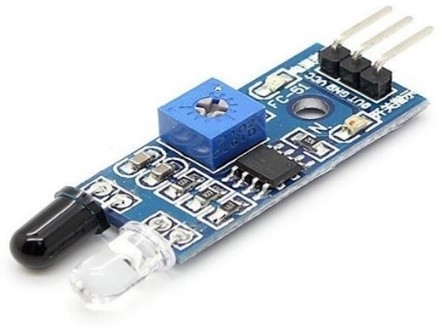Modeling and Implementation of a Density-Based Traffic Management System via Programmable Logic Controller
Keywords:
Modelling, Density, Logic Controller, Risk awareness, Traffic managementAbstract
Traditional traffic signal systems face challenges in efficiently managing traffic when a large number of vehicles move to different lanes. To address this issue, a programmable logic controller (PLC) has been applied Density-Based Smart Traffic Control system using PLC (Programmable logic controller). This work develops a smart traffic control system to keep an eye on the vehicle density at a 4-way junction. Using specific functions, calculations, and logical operations, the system program calculates the traffic density in each lane and transmits data to make automatic decisions regarding traffic signal priorities. The proposed system ensures that the traffic control system adjusts to real-time traffic conditions on the road. By utilizing a PLC (programmable logic controller), all sensors continuously check the position of each lane and perform logical operations. These operations control lanes that require immediate attention and service. Next, the system program is executed to generate output signals to control the traffic lights on the poles, facilitating the switching of red, yellow, or green lights. The duration of the green light, which indicates the ON time for each lane of the intersection, is dynamically adjusted based on the priorities calculated by the system. In summary, the execution of the density-based smart traffic control system with a programmable logic controller enables a more responsive and adaptive approach to traffic management, proficiently allocating priority based on real-time traffic situations at the intersection. This study addresses the challenges of traffic flow with improved safety and reduced congestion at busy junctions.
References
T. Tahmid and E. Hossain, “Density based smart traffic control system using canny edge detection algorithm for congregating traffic information,” 3rd Int. Conf. Electr. Inf. Commun. Technol. EICT 2017, vol. 2018-January, pp. 1–5, Jul. 2017, doi: 10.1109/EICT.2017.8275131.
V. R. S. M. Ankita Jangir, Divya Jain, Khushi Nayak, “Density Based Traffic Control System and Emergency Vehicle Detection Using Arduino,” Int. J. Adv. Eng. Manag. Sci, vol. 11, no. 2, p. 609970, 2025, [Online]. Available: https://ijaems.com/upload_images/script_files/1743152823-Density_Based.pdf
A. L. A. Muhammad, Bashir, E.C. Anene, “Development of an Intelligent Traffic Control using Optimal SSDAlgorithm for Two Cross Intersections,” Int. J. Res. Publ. Rev., vol. 6, no. 6, pp. 5752–5761, 2025, [Online]. Available: https://ijrpr.com/uploads/V6ISSUE6/IJRPR48313.pdf
D. S. AC, M. K. KM, S. T S, S. M, S. L B, and T. R, “Traffic Signal Management and Control System Based on Density of Vehicles and Emergency Vehicles,” SSRN Electron. J., May 2025, doi: 10.2139/SSRN.5250957.
D. Thomas, G. Kireeti, and D. Nikhil, “Novel automotive embedded systems for smart mobility,” Brazilian J. Dev., vol. 11, no. 3, p. e78601, 2025, doi: https://doi.org/10.34117/bjdv11n3-055.
W. Muhammad Ardi Putra, Agus Harjoko, “A Systematic Review on Vision-Based Traffic Density Estimation for Intelligent Transportation Systems,” IET Intell. Transp. Syst., 2025, doi: https://doi.org/10.1049/itr2.70038.
T. Wang, J. Cao, and A. Hussain, “Adaptive Traffic Signal Control for large-scale scenario with Cooperative Group-based Multi-agent reinforcement learning,” Transp. Res. Part C Emerg. Technol., vol. 125, p. 103046, 2021, [Online]. Available: https://www.sciencedirect.com/science/article/abs/pii/S0968090X21000760
G. Qian, M. Guo, L. Zhang, Y. Wang, S. Hu, and D. Wang, “Traffic scheduling and control in fully connected and automated networks,” Transp. Res. Part C Emerg. Technol., vol. 126, p. 103011, 2021, doi: https://doi.org/10.1016/j.trc.2021.103011.
A. F. K. A. A. A. R. Magableh, M. A. Almakhadmeh, N. Alsrehin, “Smart Traffic Light Management Systems: A Systematic Literature Review,” Int. J. Technol. Diffus., vol. 11, no. 3, pp. 22–47, 2020, doi: 10.4018/IJTD.2020070102.
I. Tomar, S. Indu, and N. Pandey, “Traffic Signal Control Methods: Current Status, Challenges, and Emerging Trends,” Lect. Notes Data Eng. Commun. Technol., vol. 90, pp. 151–163, 2022, doi: 10.1007/978-981-16-6289-8_14.
F. Y. Z. A’Isya Nur Aulia Yusuf, Ajib Setyo Arifin, “Recent development of smart traffic lights,” IAES Int. J. Artif. Intell., vol. 10, no. 1, pp. 224–233, 2021, [Online]. Available: https://scholar.ui.ac.id/en/publications/recent-development-of-smart-traffic-lights
S. Boudaakat, A. Rebbani, and O. Bouattane, “Smart Traffic Control System for Decreasing Traffic Congestion,” Proc. - 2019 4th Int. Conf. Syst. Collab. Big Data, Internet Things Secur. SysCoBIoTS 2019, Dec. 2019, doi: 10.1109/SYSCOBIOTS48768.2019.9028014.
X. (Jeff) B. Qiangqiang Guo, Li Li, “Urban traffic signal control with connected and automated vehicles: A survey,” Transp. Res. Part C Emerg. Technol., vol. 101, pp. 313–334, 2019, [Online]. Available: https://www.sciencedirect.com/science/article/abs/pii/S0968090X18311641
ZhengQin Wang, “Research on Traffic Control and Induction Collaborative Framework of Smart City in the Environment of Vehicle Network,” J. Phys. Conf. Ser., vol. 1237, no. 4, p. 042057, 2019, doi: 10.1088/1742-6596/1237/4/042057.
P. Sadhukhan and F. Gazi, “An IoT based intelligent traffic congestion control system for road crossings,” Proc. 2018 Int. Conf. Commun. Comput. Internet Things, IC3IoT 2018, pp. 371–375, Jul. 2018, doi: 10.1109/IC3IOT.2018.8668131.
Nik Nur Shaaadah Nik Dzulkefli et al, “Density Based Traffic System via IR Sensor,” J. Phys. Conf. Ser., vol. 1529, p. 022061, 2020, [Online]. Available: https://iopscience.iop.org/article/10.1088/1742-6596/1529/2/022061/pdf
Abdul Mateen, Amjad Rehman, Sabeen Sher, “Dynamic Traffic Control and Management System for Smart Cities,” Adv. Sci. Technol. – Res. J., vol. 12, no. 4, pp. 216–225, 2018, doi: 10.12913/22998624/100387.
S. Raza, “A Case Study of an Intelligent Traffic Control System in Smart Cities,” Am. J. Artif. Intell, vol. 1, no. 1, pp. 36–43, 2023, doi: 10.31219/osf.io/kr5te.

Downloads
Published
How to Cite
Issue
Section
License
Copyright (c) 2025 50SEA

This work is licensed under a Creative Commons Attribution 4.0 International License.




















